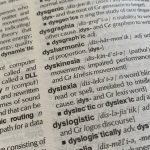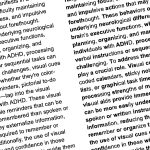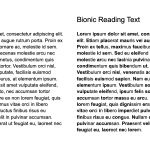Last Updated on 22/01/2024 by James Barron
Abstract
Over the past several decades, the UK’s approach to special educational needs (SEN) and disabilities in education has undergone a significant transformation, influenced by numerous legislative acts. From the ground-breaking Education Act of 1981, which first recognised the rights of children with SEN, to the comprehensive Children and Families Act 2014, which introduced holistic Education, Health and Care (EHC) plans, the legislative landscape has evolved to prioritise inclusivity and equal opportunities. Monitoring mechanisms, such as Ofsted inspections and local authority oversight, ensure compliance, while the financial and resource implications of these acts present challenges, especially for schools with limited funding. Comparatively, countries like the US, Canada, and Australia have similar inclusive approaches, albeit with unique legislative details. Challenges in implementing these acts include financial strains and bureaucratic hurdles. The acts emphasise continuous teacher training and cater to both long-term and temporary SEN. Technological advancements, especially assistive technologies, play an integral role in supporting SEN students. Central to these acts is the emphasis on the active involvement of SEN students in shaping their educational experiences, ensuring their voices influence future policies and practices. The overarching theme across these legislations is the commitment to ensuring every child, regardless of their needs, has access to quality education.
Introduction
In the past few decades, the UK has witnessed a paradigm shift in its approach to education for individuals with special educational needs (SEN) and disabilities. This change has been significantly shaped by various legislative measures, aiming to offer equal opportunities and promote inclusivity in educational settings. From the watershed moment of the Education Act in 1981, to the Special Educational Needs and Disability Act (SENDA) in 2001, the Equality Act 2010, and the Children and Families Act 2014, each piece of legislation has contributed uniquely to the evolving landscape of SEN and disabilities in the education sector.
The Education Act 1981/1993
Pioneering a revolutionary change, the Education Act 1981 recognised, for the first time, the rights of children with SEN. This legislation laid the foundation by emphasising that children with SEN should, wherever possible, have their needs met in mainstream schools. The subsequent update in 1993 further consolidated this stance and also introduced the concept of ‘statements’, which were comprehensive assessments detailing the child’s needs and the provisions required. This not only heightened awareness about SEN but also underscored the importance of tailored support, setting the stage for future legislations.
Special Educational Needs and Disability Act 2001 (SENDA)
Building on the legacy of the Education Act, SENDA 2001 marked a significant advancement in the arena of inclusivity. The act outlawed discrimination against pupils with disabilities in both mainstream and special schools, thereby emphasising their right to equal opportunities in education. Schools were now obligated to make ‘reasonable adjustments’ for students with disabilities, ensuring they could access the curriculum, buildings, and other facilities just as their peers. By establishing this legal framework, SENDA fundamentally challenged schools to reflect and restructure their practices, fostering an inclusive culture.
SEN in the Equality Act 2010
With the dawn of the Equality Act 2010, SEN and disability found their rightful place alongside other protected characteristics such as race, gender, and age. This was instrumental in ensuring that discrimination, both direct and indirect, against individuals with SEN and disabilities was unlawful. The Act also retained and expanded on the principles established by SENDA, by reinforcing the duty of schools to provide reasonable adjustments, which now included provisions like auxiliary aids. In essence, the Equality Act consolidated the gains made over the years and re-emphasised the importance of creating a level playing field for all.
SEN in the Children and Families Act 2014
Arguably one of the most profound pieces of legislation, the Children and Families Act 2014 brought about a holistic change in SEN provisions. One of its core features was the introduction of Education, Health, and Care (EHC) plans, which replaced the former ‘statements’. EHC plans were more comprehensive, covering an age range from birth to 25, and considered not just educational, but also health and social care needs. This inter-disciplinary approach was transformative as it recognised the interlinked nature of these domains in the life of a person with SEN or disabilities. Moreover, the Act also championed the involvement of children and their families in decision-making processes, further democratising the system.
How are the provisions of these acts monitored and enforced to ensure schools and institutions are compliant?
The provisions of Special Educational Needs (SEN) and disability acts are primarily monitored and enforced through a combination of Ofsted inspections, which assess how well schools support students with SEN and disabilities, and oversight by local authorities, which have the duty to ensure the necessary support is provided. Additionally, the introduction of Education, Health, and Care (EHC) plans requires statutory assessments and annual reviews, and parents or guardians can appeal to the Special Educational Needs and Disability Tribunal if they believe needs are not being met. The Department for Education also collects national data on SEN support, and bodies like the Equality and Human Rights Commission oversee compliance with broader equality duties.
How do the financial and resource implications of these acts impact schools, especially those with limited funding?
The financial and resource implications of the Special Educational Needs (SEN) and disability acts present challenges, especially for schools with limited funding. Implementing the provisions of these acts requires schools to make necessary accommodations, hire specialised staff, provide tailored resources, and ensure continuous training for educators. This often means reallocating budgets, seeking additional funds, or sometimes making compromises in other areas. Schools with tighter budgets may find it particularly strenuous to meet the required standards, potentially leading to disparities in the quality of support offered to students with SEN and disabilities across different educational institutions.
What are the criteria for determining what constitutes a ‘reasonable adjustment’?
A “reasonable adjustment”, particularly the Equality Act 2010, refers to changes or modifications made to ensure that students with disabilities are not placed at a substantial disadvantage compared to those without disabilities. The criteria for determining its reasonability include the practicality of the adjustment, the effectiveness in reducing the disadvantage, the financial and resource implications for the institution, the potential impact on other students, and the nature and size of the institution. It’s a balanced assessment, ensuring that adjustments are both feasible for institutions and effective for students.
How has the transition from ‘statements’ to EHC plans affected families and educational institutions in terms of administrative workload and clarity of support?
The transition from ‘statements’ to Education, Health, and Care (EHC) plans, introduced by the Children and Families Act 2014, aimed to provide a more holistic approach to supporting individuals with SEN from birth to 25 years. For families, this brought about a more comprehensive, person-centred plan that combined educational, health, and social care needs, potentially offering clearer and more consistent support across services. However, for educational institutions and local authorities, this transition often meant an increased administrative workload due to the broader scope of EHC plans, more rigorous assessment processes, and the requirement of annual reviews. This comprehensive approach, while more inclusive, demanded closer collaboration between multiple agencies and stakeholders, adding layers of coordination and communication.
How do these UK-based acts compare to SEN and disability legislation in other countries?
United States: The Individuals with Disabilities Education Act (IDEA) mandates free appropriate public education for children with disabilities. Like the UK’s EHC plans, IDEA requires Individualised Education Plans (IEPs) tailored to each student’s needs. Section 504 of the Rehabilitation Act and the Americans with Disabilities Act (ADA) further protect individuals from disability-based discrimination.
Canada: Provinces and territories have jurisdiction over education, leading to varied SEN provisions. Generally, Canadian systems advocate for inclusive education, where students with special needs are integrated into regular classrooms, supported by Individual Education Plans (IEPs) similar to the UK.
Australia: The Disability Standards for Education (2005) ensures students with disabilities can access and participate in education without discrimination. Australian states and territories develop their policies and provide funding, much like Canada.
European Countries: Many European countries, influenced by the Salamanca Statement (1994), have transitioned from segregating students with special needs to a more inclusive model. Countries like Finland and Italy have progressive inclusive education models. However, the specific legal frameworks, support mechanisms, and funding models vary.
Developing Countries: Many developing countries are still evolving their SEN frameworks. While inclusive education is gaining traction, driven partly by the UN’s Sustainable Development Goals, challenges like lack of resources, trained personnel, and cultural stigmas can be barriers.
What have been the major challenges or criticisms faced during the implementation of these acts?
The implementation of the Special Educational Needs (SEN) and disability acts in the UK has faced several challenges and criticisms. Notably, many educational institutions, especially those with limited resources, have found it challenging to meet the financial demands and logistical complexities required to provide the stipulated support. There have also been concerns regarding the lengthy and sometimes bureaucratic processes involved in obtaining an Education, Health, and Care (EHC) plan. Additionally, the variability in the quality and consistency of SEN provisions across different regions and schools has been a point of contention. Furthermore, while parental involvement is encouraged, some parents have expressed feeling overwhelmed or sidelined during decision-making processes. Lastly, despite progress, there remains a call for greater training and awareness for educators to effectively cater to the diverse needs of SEN students.
How do these acts address the training and qualification of teachers and support staff to cater to students with SEN?
The UK’s SEN and disability acts underscore the importance of equipping educators and support staff with the requisite skills to cater to students with Special Educational Needs. The Children and Families Act 2014 emphasises the role of local authorities in ensuring that teachers and practitioners are well trained. The acts advocate for continuous professional development, ensuring that teachers stay updated on best practices for inclusive education. Furthermore, there’s a push for initial teacher training (ITT) programs to incorporate SEN modules, ensuring that new teachers are prepared from the outset. While the acts set the broader framework, specifics like training content and frequency often fall to local authorities, schools, and professional bodies, ensuring a degree of adaptability to the unique needs of their student populations.
What provisions exist in these acts for students who might have temporary special educational needs, such as those resulting from accidents or short-term illnesses?
The UK’s SEN and disability acts are designed to be flexible and responsive to the varying needs of students, including those with temporary special educational needs. For instance, while the primary focus of Education, Health, and Care (EHC) plans is on long-term needs, schools have the responsibility, under the framework of the acts, to identify and support all pupils with SEN, whether their needs are long-term or temporary. This means that if a student faces short-term challenges due to accident or illness, schools are expected to make necessary accommodations and provide support, often through differentiated teaching, additional resources, or temporary individualised support plans, even if a formal EHC plan is not in place. The key is ensuring every student can access the curriculum and participate fully in school life, regardless of the duration of their needs.
How have technological advancements been integrated or considered in the context of these acts to support students with SEN?
Technological advancements have increasingly become a significant component of support strategies for students with Special Educational Needs (SEN) in the context of UK legislation. The acts emphasise the importance of giving all students access to the curriculum and fostering full participation. While they don’t prescribe specific technologies, the emphasis on tailored support and accessibility inherently encourages schools to adopt innovative tech solutions. Assistive technologies, such as speech-to-text software, screen readers, and specialised communication tools, have been integrated into educational settings to cater to varied needs. Furthermore, digital platforms and e-learning tools have been adapted to accommodate individual learning styles, providing interactive and customisable content. As technology continues to evolve, its role in enhancing inclusivity and accessibility for SEN students within the legislative framework becomes even more pronounced.
How do the acts ensure that the voices and experiences of students with SEN are not just heard but actively integrated into shaping future educational policies and practices?
The SEN and disability acts in the UK emphasise the centrality of the child’s voice and experiences in all decisions affecting them. Specifically, the Children and Families Act 2014 champions the principle of co-production, which ensures students, along with their families, are active participants in shaping their Education, Health, and Care (EHC) plans. This ethos is reflected in the statutory guidance which mandates that local authorities and educational institutions actively involve students in reviews, assessments, and the formulation of support strategies. Moreover, by promoting the practice of capturing student feedback and emphasising regular reviews of provisions, the acts ensure that the lived experiences of students with SEN directly inform and refine both immediate interventions and longer-term educational policy and practice changes.
Conclusion
Reflecting on the progression from the Education Act 1981 to the Children and Families Act 2014, it becomes evident that the UK’s legislative approach to SEN and disabilities has been evolutionary, each act building upon the foundation of its predecessor. The journey, while challenging, has always been guided by the central tenet of ensuring inclusivity and equal opportunities for all. Today, schools are better equipped and more attuned to the diverse needs of their students, ensuring that every child, regardless of their special educational needs or disabilities, can access a quality education that meets their unique requirements. Through continued collaboration between educators, policymakers, and the community, the hope remains that every student will truly be able to reach their full potential.
Further reading
Special Educational Needs and Disability: The Basics by Janice Wearmouth.
This book offers an engaging and comprehensive overview of SEN and disability in education, covering both theoretical concepts and practical applications.
The SENCO Survival Guide: The nuts and bolts of everything you need to know by Sylvia Edwards.
A practical guide for Special Educational Needs Coordinators, it sheds light on the roles, responsibilities, and best practices in the context of UK legislation.
Special Educational Needs: A New Look by Mary Warnock and Brahm Norwich.
This book revisits the influential Warnock report, which laid the foundation for much of the UK’s SEN policy, providing an essential historical and philosophical context.
Council for Disabled Children (CDC)
The CDC is the umbrella body for the disabled children’s sector. Their website provides invaluable resources, policy updates, and best practices for SEN and disability.
Website URL: https://councilfordisabledchildren.org.uk/
National Association for Special Educational Needs (NASEN)
NASEN supports individuals working with children and young people with special educational needs and disabilities. They offer resources, training, and the latest in policy and research.
Website URL: http://www.nasen.org.uk/
Special Needs Jungle (SNJ)
SNJ provides parent-centric information, news, and resources related to special educational needs, disabilities, mental health, and other conditions. They often cover the latest policies, reforms, and offer perspectives from both parents and professionals.
Website URL: https://www.specialneedsjungle.com/
Cerebral Palsy Guide
Cerebral Palsy guide is an organisation dedicated to educating families about cerebral palsy, their team is committed to raising awareness about cerebral palsy. They aim to provide important information and support for families affected by cerebral palsy.
Website URL: https://www.cerebralpalsyguide.com/community/special-education/
Author Profile
Latest entries
 Resources2024.01.25Animals That Start With The Letter N
Resources2024.01.25Animals That Start With The Letter N Bionic Reading2023.09.22Bionic Reading for Dyslexia: A Potential Bridge to Enhanced Comprehension
Bionic Reading2023.09.22Bionic Reading for Dyslexia: A Potential Bridge to Enhanced Comprehension Bionic Reading2023.09.21Bionic Reading for ADHD: Harnessing the Power of Visual Cues to Aid Focus and Comprehension
Bionic Reading2023.09.21Bionic Reading for ADHD: Harnessing the Power of Visual Cues to Aid Focus and Comprehension Bionic Reading2023.09.20Bionic Reading Method
Bionic Reading2023.09.20Bionic Reading Method




